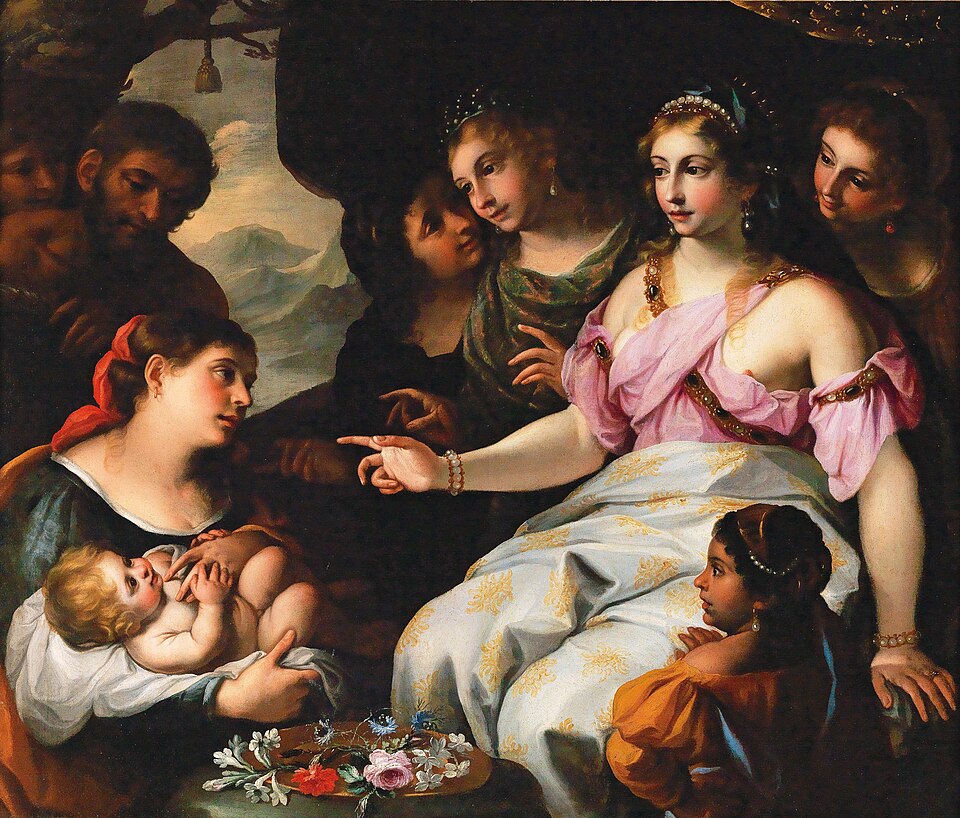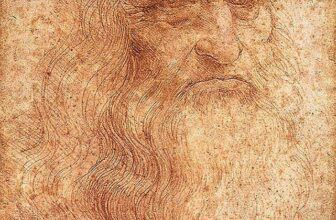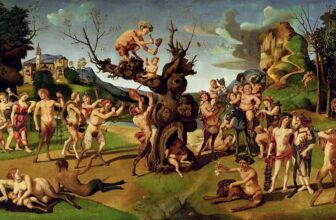
Meaning of The Finding of Moses by Elisabetta Sirani
In the rich tapestry of Baroque art, one name glows with both subtlety and brilliance, Elisabetta Sirani, a pioneering female artist in 17th-century Italy. In a time when women artists were exceptions in a male-dominated world, Sirani carved her name into art history with unmatched elegance and intellectual vigor. Among her many masterpieces, The Finding of Moses stands out not only as a testament to her technical finesse but also as a deeply symbolic narrative replete with biblical gravitas, artistic innovation, and feminine sensibility.
Who Was Elisabetta Sirani?
Born in 1638 in Bologna, Italy, Elisabetta Sirani was raised in a family of artists. Her father, Giovanni Andrea Sirani, was a pupil of Guido Reni, one of the leading painters of the Italian Baroque. Under his tutelage, Elisabetta was immersed in the world of classical training, humanist thought, and technical discipline from an early age. Her precocious talent quickly became evident, and by her teenage years, she was producing works that rivaled her male counterparts.
Sirani was known not only for her prolific output, completing over 200 paintings, drawings, and etchings before her premature death at age 27, but also for opening an art academy for women, the first of its kind in Europe. Through this, she inspired a generation of female artists and left an enduring legacy in the art world.
The Story of the Finding of Moses: A Biblical Prelude
The subject of The Finding of Moses is rooted in the Old Testament, specifically the Book of Exodus. In a time of oppression, the Pharaoh of Egypt, fearing the growing population of Israelites, ordered all male Hebrew infants to be killed. To save her child, Moses’ mother placed him in a basket and set him afloat on the Nile. The basket was discovered by Pharaoh’s daughter, who, moved by compassion, adopted the child and raised him in the royal palace.
This poignant moment, when divine providence intersects with human mercy, is the crux of Sirani’s composition. It is a subject that had been treated by many great artists of the Renaissance and Baroque periods, including Nicolas Poussin and Peter Paul Rubens. However, Sirani’s version carries a unique emotional resonance and visual subtlety, likely influenced by her gender, artistic sensitivity, and intellectual environment.
How Was the Painting Created? The Artist’s Process
Though few written records detail the exact circumstances of the creation of The Finding of Moses, art historians suggest that it was completed around the mid-1660s, during the height of Sirani’s career. Executed in oil on canvas, the work reflects the hallmarks of the Bolognese School, a style characterized by clarity of composition, harmony of color, and a balance between naturalism and idealized beauty.
Sirani was known for her speed and precision. According to contemporary accounts, she often painted directly onto the canvas with minimal preliminary drawing. Her brushwork was fluid and assured, blending fine detail with dramatic flair. In The Finding of Moses, we see this confidence manifest in the graceful poses of the figures, the soft rendering of fabrics, and the serene landscape that frames the action.
The painting likely involved extensive preparation, including studies of drapery, facial expressions, and compositional arrangements. Sirani, who was deeply familiar with the works of Reni, Carracci, and Caravaggio, synthesized their influence into her own distinctive voice, elegant, emotionally intelligent, and quietly powerful.
What Is Happening in the Painting?
At the center of The Finding of Moses lies the dramatic moment of discovery. A group of women gathers by the riverbank, their attention focused on the basket that holds the infant Moses. Pharaoh’s daughter, resplendent in regal attire, leans forward to examine the child. Her gesture is both maternal and authoritative, suggesting compassion as well as royal duty.
Moses’ sister Miriam is also depicted, perhaps watching with a mix of hope and anxiety. She would later step forward to suggest a Hebrew nurse for the child, Moses’ own mother. The scene unfolds under a soft, golden light, casting gentle shadows and illuminating the emotional undercurrents of the moment.
The river Nile, stylized with classical serenity, winds its way through the background. Palms and reeds suggest an exotic location while still adhering to the European conventions of biblical painting. The overall atmosphere is one of graceful solemnity, capturing the divine intervention implicit in Moses’ survival and foreshadowing his future role as a liberator.
Symbolism and Deeper Meaning
Elisabetta Sirani’s The Finding of Moses is rich in symbolism and multi-layered meaning. Let’s unpack some of the most striking elements:
1. The Basket
The basket, humble yet crucial, is a symbol of faith and preservation. It represents the mother’s act of hope in the face of tyranny and serves as the vessel of Moses’ divine destiny.
2. Pharaoh’s Daughter
She symbolizes compassion transcending politics. As the daughter of a tyrant, she might have been expected to follow her father’s decree. Yet she chooses mercy, suggesting that individual morality can defy systemic evil.
3. Moses
Though still an infant, Moses is the embodiment of salvation, both literally and symbolically. He is the child who will later lead his people to freedom, and in this scene, his vulnerability contrasts with the power he will one day wield.
4. The Nile
The river is both a natural setting and a spiritual metaphor. Water often symbolizes cleansing, rebirth, and divine will. Moses’ journey on the Nile is thus a baptismal passage, from danger to safety, from anonymity to historical significance.
5. Female Figures
One of the most powerful aspects of Sirani’s interpretation is the centrality of women. All the principal characters in the scene are female. The focus on their interaction, agency, and emotion reflects Sirani’s own status as a woman artist and subtly challenges the patriarchal narratives often seen in biblical art.
What Type of Art Is This?
The Finding of Moses is a quintessential example of Baroque art, yet it contains nuances that distinguish it from the more theatrical tendencies of the style. The Baroque period, spanning roughly from 1600 to 1750, emphasized drama, movement, and grandeur. Artists like Caravaggio and Rubens thrilled their audiences with stark contrasts, dynamic poses, and emotional intensity.
Sirani, however, followed the more restrained path of the Bolognese Baroque, heavily influenced by classical ideals and High Renaissance clarity. Her composition is orderly, the gestures refined, the emotional tenor more contemplative than explosive. This aligns her more with Guido Reni, her artistic mentor via her father, than with the visceral drama of Caravaggio.
Her art also flirts with proto-Neoclassicism, especially in the serene facial expressions and idealized forms. There’s a timeless grace in The Finding of Moses that sets it apart from her contemporaries.
What Does The Finding of Moses Painting Represent?
At its core, The Finding of Moses is a meditation on divine providence, maternal instinct, and moral courage. It speaks to the possibility of goodness amidst oppression, of survival against all odds, and of the mysterious ways in which fate unfolds.
For Sirani, who worked in a period rife with political tension, religious reform, and artistic transformation, the story of Moses may have served as an allegory for hope and renewal. Moreover, her focus on female solidarity adds a personal dimension, perhaps reflecting her own experience as a woman navigating, and succeeding in, a restrictive society.
Where Is The Finding of Moses Painting Today?
The Finding of Moses by Elisabetta Sirani is currently housed in the National Gallery, located in London, United Kingdom. It is part of their permanent collection and is occasionally featured in thematic exhibitions that focus on Baroque art, women artists, or biblical narratives in Western painting.
The painting’s inclusion in such a prestigious institution is a testament to Sirani’s growing recognition in recent decades. Once overlooked in mainstream art history, she is now celebrated for her contributions to both art and gender equality.
How Much Is the Painting Worth?
As a work in a public collection, The Finding of Moses is not for sale, and thus does not have a market price. However, given the increasing interest in female Old Masters and the rarity of Sirani’s surviving works, a painting of this caliber could be worth millions of dollars on the open market.
In recent years, works by female artists of the Baroque period, once underappreciated, have seen soaring valuations. Auction houses like Sotheby’s and Christie’s have reported record prices for works by Artemisia Gentileschi, Judith Leyster, and Lavinia Fontana. Were The Finding of Moses ever to be sold (hypothetically), it would almost certainly command a seven-figure price.
Elisabetta Sirani’s The Finding of Moses is more than a painting. It is a visual symphony of faith, femininity, and foresight. It captures a fleeting moment that changed the course of biblical history while also echoing timeless human values, hope, compassion, courage, and destiny.
Sirani painted at a time when her very presence on the artistic stage was revolutionary. In The Finding of Moses, she brings not only technical mastery but also emotional intelligence and philosophical depth. It is a painting that invites us to pause, reflect, and remember that sometimes the most powerful stories are told in the quiet moments, when a basket is opened, and history begins anew.




